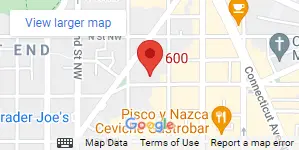To be able to make the investment in U.S. study, smart planning is the key — you need to do research to identify U.S. funding possibilities that match your own needs and strengths.
Below are some suggestions and strategies to help you get off to the best possible start in funding your U.S. studies.
Planning
Begin researching the costs of your planned program well in advance. All U.S. universities and colleges can provide an estimate of tuition and living costs at their particular institution. Both tuition and living costs can vary widely.
Aid availability also varies and can make a big difference — don’t assume an institution is too expensive without checking how much aid is available to international students there.
Be sure to consider the following types of expenses:
- College and university application fees
- Fees for standardized tests
- Tuition
- Required fees
- Travel expenses
- Housing and meals
- Books and supplies
- Health insurance
- Clothing, recreation, incidental expenses
If you plan to study in the United States for several years, consider how you will fund the whole period of study.
Start researching financial aid possibilities as early as possible — one to two years before you plan to go to the United States. Be aware that financial aid deadlines may be months earlier than regular application deadlines. Give yourself time to get together a quality aid application and assemble standardized test scores, transcripts, recommendations, essays, and so forth.
Sources of Financial Aid
The university or college you will attend is the most likely source of outside funding — over 10 percent of undergraduate and over 45 percent of graduate international students in the United States receive primary funding from their college or university, according to statistics maintained by the Institute for International Education.
As is clear from this statistic, funding is much more available at the graduate level. However, some undergraduate institutions also offer scholarships, based on academic merit or, less commonly, a background of community service, athletic ability, talent in the visual or performing arts, or other criteria.
Graduate teaching or research assistantships are one type of aid commonly awarded by universities to graduate-level students. Students with assistantships may be expected to teach sections of undergraduate classes or help professors with their research. In return, they may receive a salary to cover part of their educational costs or they may be excused from paying tuition.
First-year graduate students are not usually immediately given assistantships — they are first expected to demonstrate academic and teaching ability as well as fluency in English. Assistantships are more available in some fields of study than others. For instance many are awarded in the sciences, a smaller number in the humanities and social sciences, and very few or in professional programs such as business or law.
The U.S. government provides some limited aid to international students, primarily at the graduate level. The Amideast or other EducationUSA center nearest you can provide details on current programs. You should also check on the availability of local and international government aid programs, which provide primary support to about 4 percent of international students in the United States.
Finally, sources such as private associations and international foundations may award grants for education. These are often hotly competed and tend to provide only small amounts of funding rather than full support. Combined with other funding, however, such awards may be helpful in achieving your goal of U.S. study.
For More Information on Financial Aid
You can also find more detailed information on U.S. university costs, financial planning, and scholarship opportunities on this site. See also Web pages for particular Amideast offices for information on scholarships that Amideast may administer in specific locations. Contact the EducationUSA centers at Amideast offices or in whatever location is nearest you directly for the most current and complete information on these and other opportunities.

